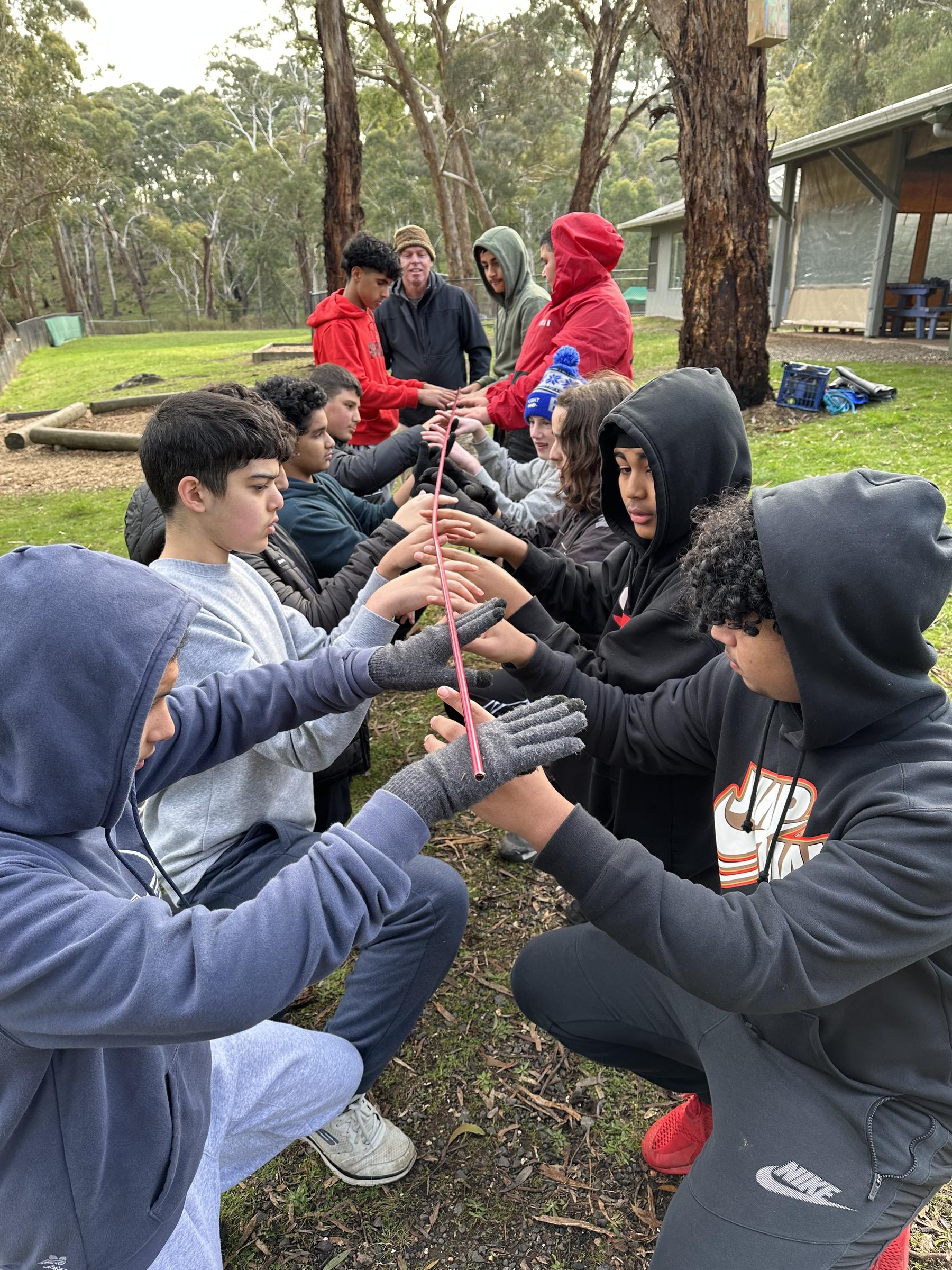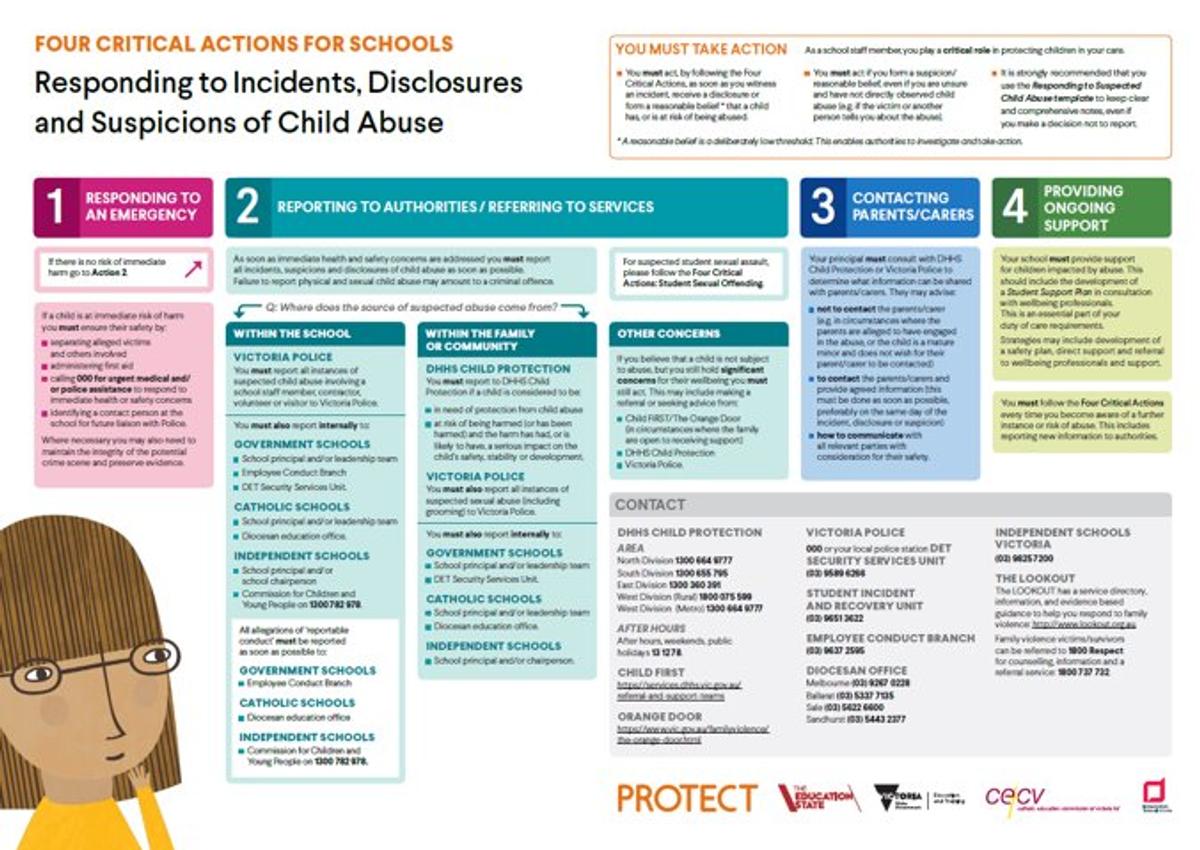Legal Responsibilities

Duty of Care
The law regards the teacher-student relationship as having a special welfare component. This means that teachers have a ‘duty of care’ to protect their students from reasonably-foreseeable injuries.
The duty of care is prescribed by common law – that is, the law made by judges in court when deciding cases – rather that made by an Act of Parliament. The courts recognize that accidents happen in schools, and a teacher will have breached their duty of care only if:
- the injury was reasonably foreseeable, i.e. not completely unexpected, AND
- the injury occurred because the teacher did not carry out their responsibilities in a sufficiently careful manner.
There is no clear-cut definition of terms like ‘reasonable’ or ‘careful’. Whether the duty of care has been broken depends on the particular facts of each case.
For example, teachers on yard duty would not be responsible for a sudden, unforeseeable attack by one student or another. However, teachers could be implicated if they had failed to do their rostered yard duty and, as a result, no teacher was present to stop an incident from occurring.
The duty of care also requires teachers to be proactive where students could be injured. For example, if a teacher crossing the school yard encounters students behaving dangerously, they should intervene even if they are not on official yard duty.
It should also be noted that the law has established that, in some circumstances, a school’s duty (and therefore the Department’s duty) will extend beyond school hours and outside of school grounds. The duty will be extended to outside school hours and premises when the relationship between the school and the student requires it in the particular circumstances.
Staff should maintain a professional distance from students, parents and family where possible. This includes the use of social media, other electronic communications and providing personal contact details (other than College phone number and DET email address). It is strongly recommended that staff do NOT provide personal phone numbers or email addresses to students and student family members or connect with the same on any social media platform.
Teachers who act carefully and sensibly, and plan and supervise activities properly, should not fear being sued for injuries suffered by students. (Ref: https://www.education.vic.gov.au/school/principals/spag/safety/Pages/dutyofcare.aspx)
Mandatory Reporting
All children have a right to feel safe and to be safe. All professionals working with children and/or their families share the responsibility of protecting children. As staff members, we have a mandatory and moral responsibility to respond to incidents involving abuse of the children with whom we have contact, and to use our professional judgment of available information to ensure that the reporting is appropriate to the situation (to report instances that we believe involve physical abuse, sexual abuse, emotional and psychological harm or neglect).
All staff should receive an email link to complete this annual mandatory training. More information is also available in Teams.
Child Safe Policy
To support schools to create a child safe organisation and protect students from all forms of abuse. The Child Safe Standards (the Standards) are compulsory minimum standards for all organisations that provide services to children including Victorian schools. The aim of the Standards is to ensure organisations are well prepared to protect children from abuse and neglect. It is recognised that all schools have existing policies and procedures that aim to keep children safe.
The Standards provide a framework to identify gaps and improve policy and practices around child safety.
The Victorian Registration and Qualifications Authority (VRQA) as regulator for all Victorian schools has responsibility for ensuring compliance with the Child Safe Standards in schools.
The Standards are:
- Standard 1: Strategies to embed an organisational culture of child safety, including through effective leadership arrangements
- Standard 2: A child safe policy or statement of commitment to child safety
- Standard 3: A code of conduct that establishes clear expectations for appropriate behaviour with children
- Standard 4: Screening, supervision, training and other human resources practices that reduce the risk of child abuse by new and existing personnel
- Standard 5: Processes for responding to and reporting suspected child abuse
- Standard 6: Strategies to identify and reduce or remove risks of child abuse
- Standard 7: Strategies to promote the participation and empowerment of children.
Ministerial Order 870 -Child Safe Standards - Managing the Risk of Child Abuse in Schools (Aug 2016) provides guidance on how the Standards apply to a school setting. To implement the minimum Standards in accordance with the Order school governing authorities must:
- take account of the diversity of all children, including (but not limited to) the needs of Aboriginal and Torres Strait Islander children, children from culturally and linguistically diverse backgrounds, children with disabilities, and children who are vulnerable; and
- make reasonable efforts to accommodate such diversity.
The college Child Safe policies can be found on the college website here
*All staff are required to read and sign the Child safe agreement, issued annually and upon employment/placement/volunteering

